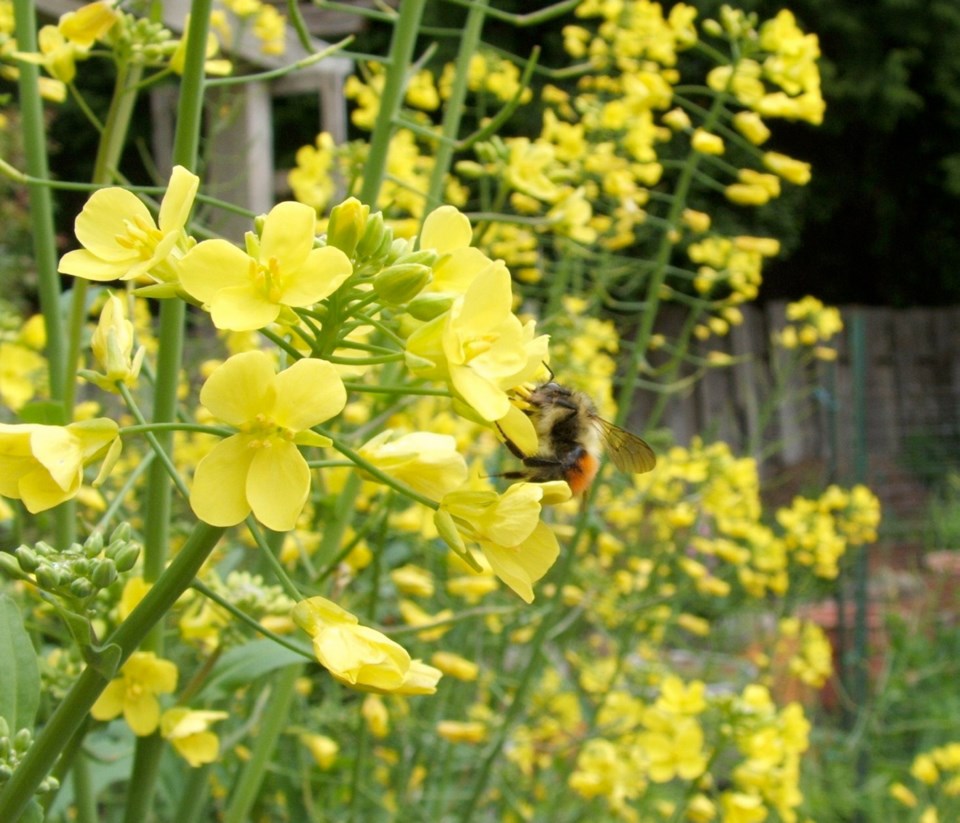Dear Helen: As I’ve been slowly putting together a vegetable garden, I’ve looked for guidance on the best way to lay out rows for seeding. Do you use string wrapped around two sticks and unfurled to mark rows?
P.T.
Back when I began gardening, that was the traditional method for marking the lines to create furrows for seeding. It wasn’t long before I moved on to a far simpler method.
A hoe is the tool I use for outdoor seeding. Once a plot is readied for sowing seeds, I mark each line of seeding by laying the hoe handle on the ground. The indentation in the soil becomes the seeding line.
The next thing is to make a furrow along the line — an indentation in the soil to receive the seeds. I use my fingers to create the indentation, but a corner of the hoe blade can also be used.
Once the seeds are in place, use the hoe blade to draw soil from the furrow sides and cover the seeds. Then tamp the line down with the flat of the hoe blade to bring the seeds into firm contact with the soil.
Dear Helen: I’m confused over the management of kale plants. For how long do the plants produce palatable food in spring? Should they be left to flower?
C.P.
Weather and the variety determine how long kale plants will yield tender young leaves and short, succulent flowerbud stems and clusters in the spring. Hot weather hastens flowering while cool, damp weather prolongs the production of new green growth.
On some of the varieties in my garden, flower stalks were hardening and blooming in late April. On others, I was still picking young, juicy stems and buds less than a week ago.
I’ve observed over the years that self-sown or “volunteer” kale plants often turn out to be the best and bushiest producers of tender, sweet leaves and flowerbud stems. That certainly happened this year. The best kale plants and the longest to produce were self-sown.
Though I sometimes need to remove a few plants to make room for new spring plantings, I try to leave as many kale plants to flower as possible. The bright yellow blooms attract and feed bees and other beneficial insects. Leaving the plants to bloom also enhances the chances of seed formation and the appearance of interesting “volunteer” plants with valuable characteristics in the spring.
Dear Helen: I’m seeing numerous woodbugs in my garden this spring. Do they harm plants, and are there ways of controlling their numbers?
M.H.
Woodbugs (sowbugs and pillbugs) become pests when they feed on vulnerable seedlings, germinating seeds and young roots, but they also feed on decaying matter and are helpful in breaking down the materials in compost heaps.
Pillbugs, the ones that curl into a ball when disturbed, are larger and more damaging than sowbugs. Cool, moist conditions in spring cause their numbers to proliferate.
To keep their numbers down, avoid sowing seeds, especially large seeds like beans and corn, in cold, wet soils. Take care not to over-water. Morning watering reduces the chances of the soil surface remaining damp in the evening. The creatures are most active at night.
If you mulch plants with leaves, straw or some other moisture-retaining, soil-cooling materials, wait until the plants to be mulched have grown fairly sturdy and less vulnerable. Try to keep the garden clear of woody debris.
Lift developing melons and cucumbers off the ground by placing them on overturned plant pots. I train cucumber vines on wire fencing to keep them dry, clean, and undamaged.
I’ve been noticing more woodlouse spiders than usual in the garden this spring. They look somewhat fierce, with bulbous abdomens, long and menacing looking front legs, and an odd reddish brown colour. If you see any, protect them. They feed on pillbugs and sowbugs.
Dear Helen: Are beet seeds started indoors?
T.P.
I suppose they could be, but I don’t know why anyone would take on so much extra work. Root vegetables (beets, carrots, parsnips) are more easily seeded directly in the ground, and thinned as needed later as the plants develop.
The most obvious candidates for sowing indoors are plants that benefit from a head start indoors for extra growing time and a harvesting period that will begin as early as possible in summer. Examples are peppers, tomatoes, melons and cucumber.



